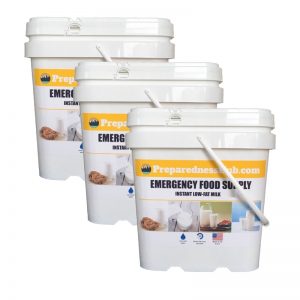
The old saying goes “you can’t see the forest for the trees,” and while this is a great way of saying to step back and see the big picture, sometimes it’s the specific trees you want to see. While groups of trees tend to blend together in an amalgamation of a forest, each tree in that forest is unique and many of them offer very real benefits to anyone looking to survive off the land.
Learning which of these trees offers the most benefit can be a huge help, especially in a true SHTF situation. While there are many more trees that offer benefits, the five below are fairly common, so learning them will help you survive in most areas.
White Birch

Possibly the easiest tree to identify in this list, the white birch, is most clearly spotted by its papery white bark. Sycamore trees also have white bark, but what sets the birch apart is the papery character its bark has. You can actually peel it off in sheets.
The white birch has smaller, oval-shaped leaves with a pointed tip. White birches grow primarily in northern climes, so you’ll only be able to find them up north.
Uses for White Birch:
- Sap is sweet and drinkable, no purification needed.
- Bark can be used to make containers up to an entire canoe!
- Bark is perfect for starting fires.
- You can extract resin from the bark by heating it over a fire. When collected, this can work as a moderately strong glue.
White Oak

Most people are familiar with red oaks and their pointy leaves, but white oaks are fairly similar, just with more rounded leaves. The easiest way to tell an oak from other trees in the forest during the summer months is the abundance of acorns. The acorns from the white oak are less bitter than that of the red oak, and completely edible.
White oaks are some of the largest trees in the forest and can easily grow over 100 feet tall.
Uses for White Oak:
- Oak flowers can be dried and used as tinder.
- Bark and wood are high in tannic acid, which can be used to tan leather.
- Acorns make great bait for trapping small animals.
- The tannic acid found in the acorns, bark, and wood can be used as an antibacterial agent.
- Tannic acid can be extracted by boiling acorns, twigs, and inner bark.
- Acorns, after boiling to remove tannic acid, can be ground and made into flour for bread.
Sugar Maple

Easily the most abundant tree in this list, the sugar maple is most easily spotted in the fall due to the wild burst of color the leaves turn, including fire red, orange, and yellow. Another good indicator of a sugar maple is the ubiquitous helicopter seed pods we all played with as kids (and sometimes as adults).
The great thing about a sugar maple is, well, the sugar! These trees are where maple syrup comes from, so if you find one and have a spile handy, you can get yourself some of nature’s original energy drink. Sadly, it takes about 40 gallons to make one gallon of maple syrup, but lucky for you the sap is lighter and easier to drink.

Along with the sap, the little helicopters can be deseeded and eaten like edamame. Also, maple branches are great for just about anything you need a branch for, as they often have many forks on each stick and are fairly fire resistant when green and fresh.

 3-Pack Instant Milk Case - 480 Servings
3-Pack Instant Milk Case - 480 Servings